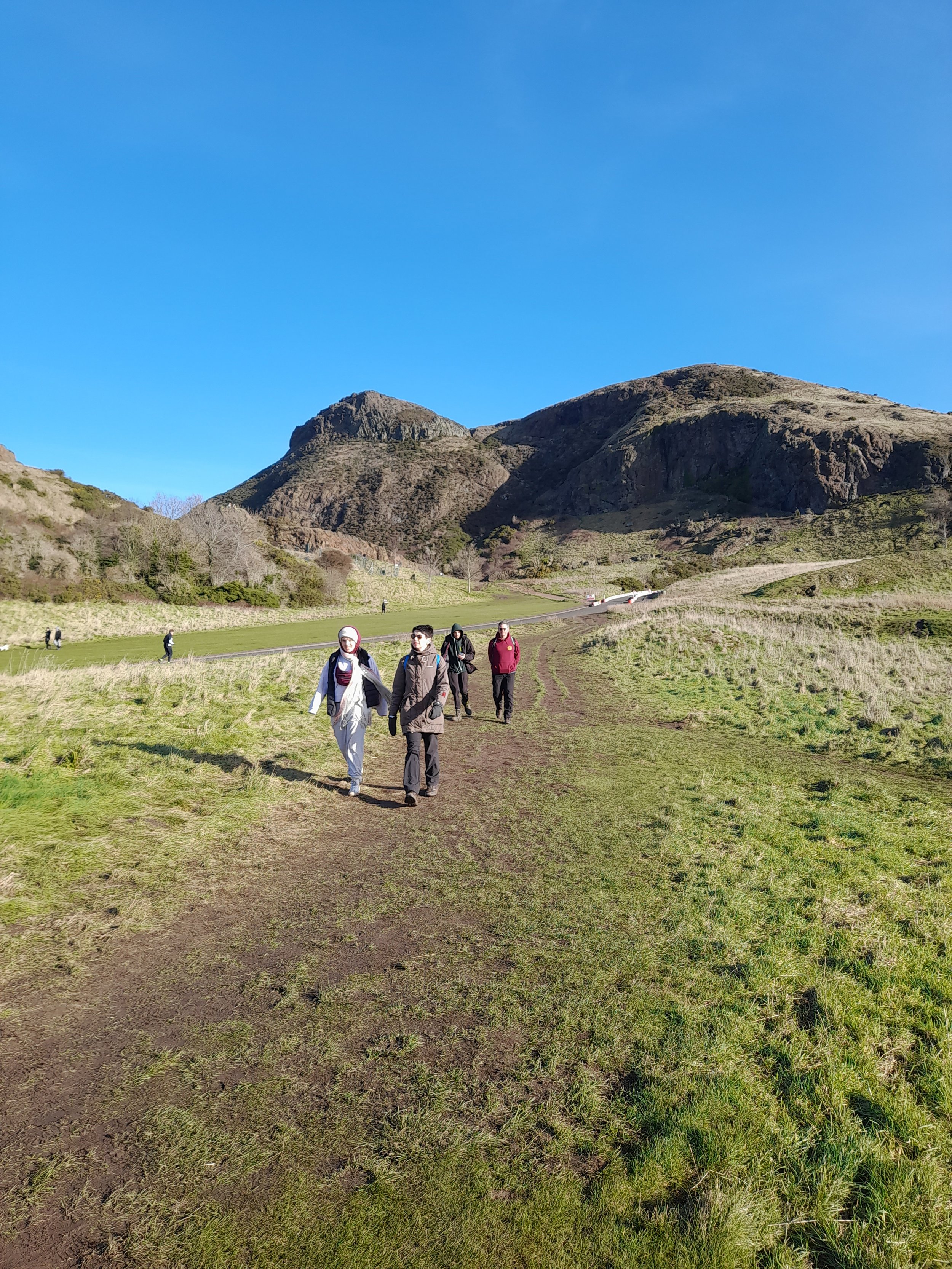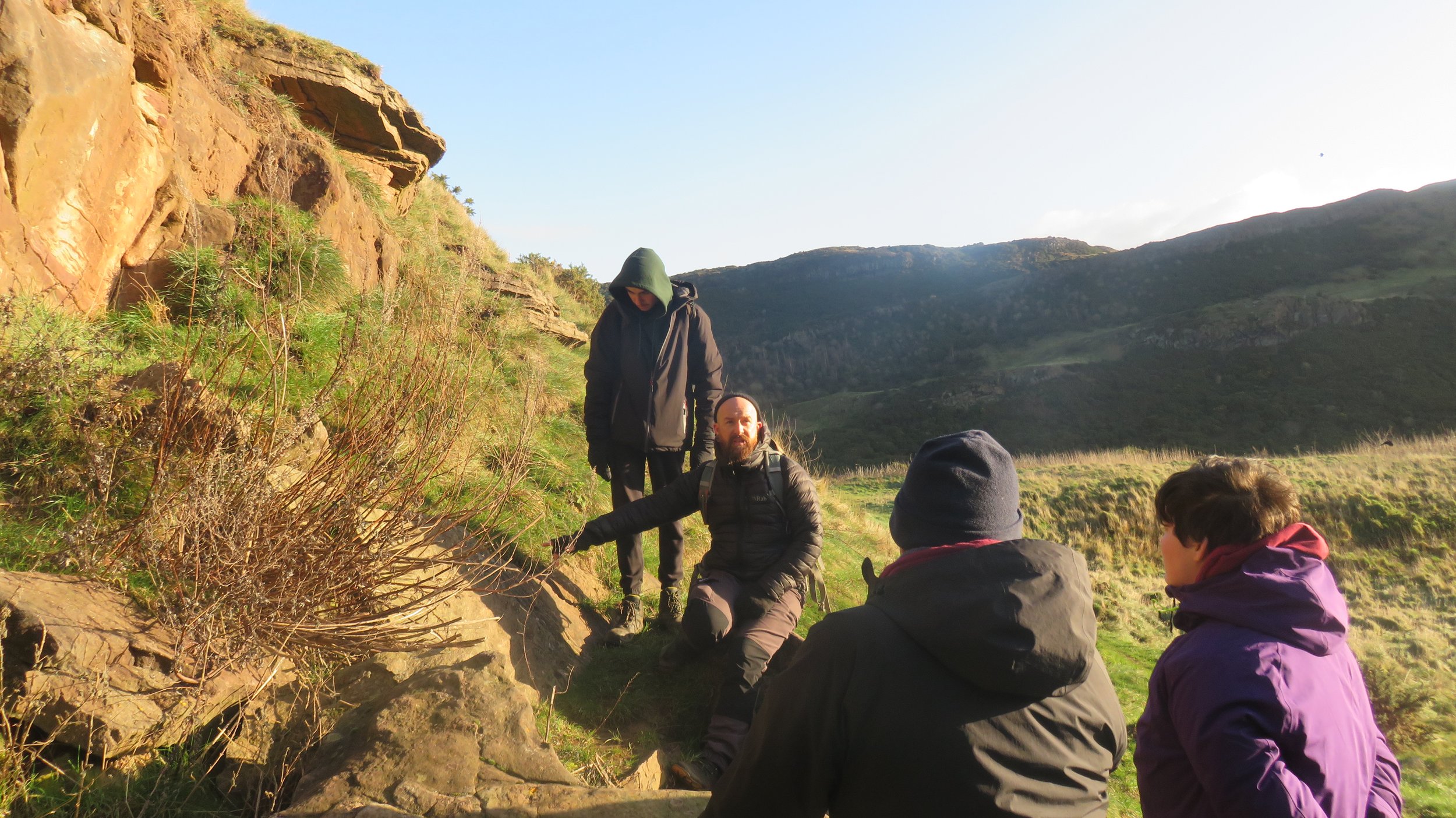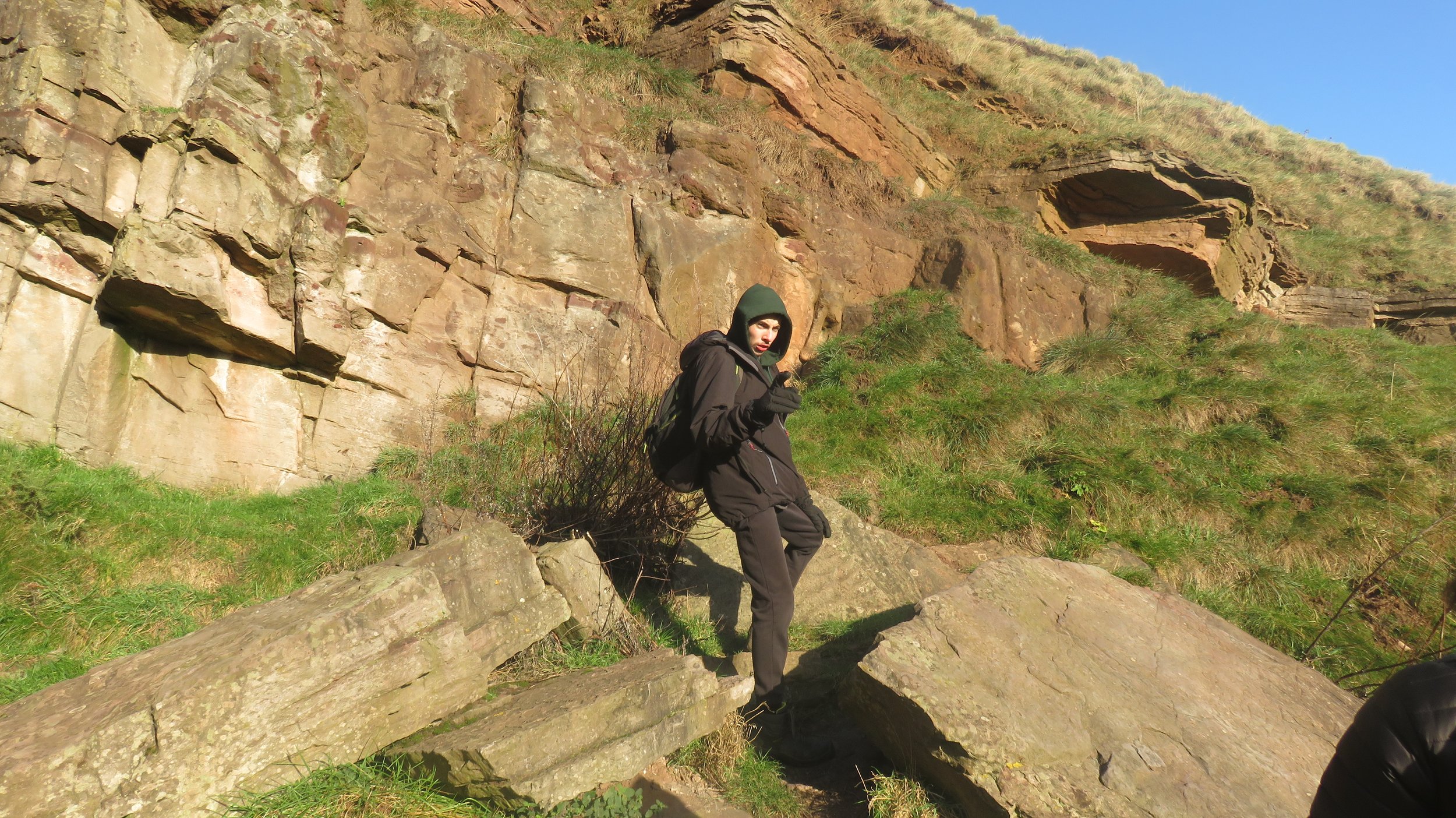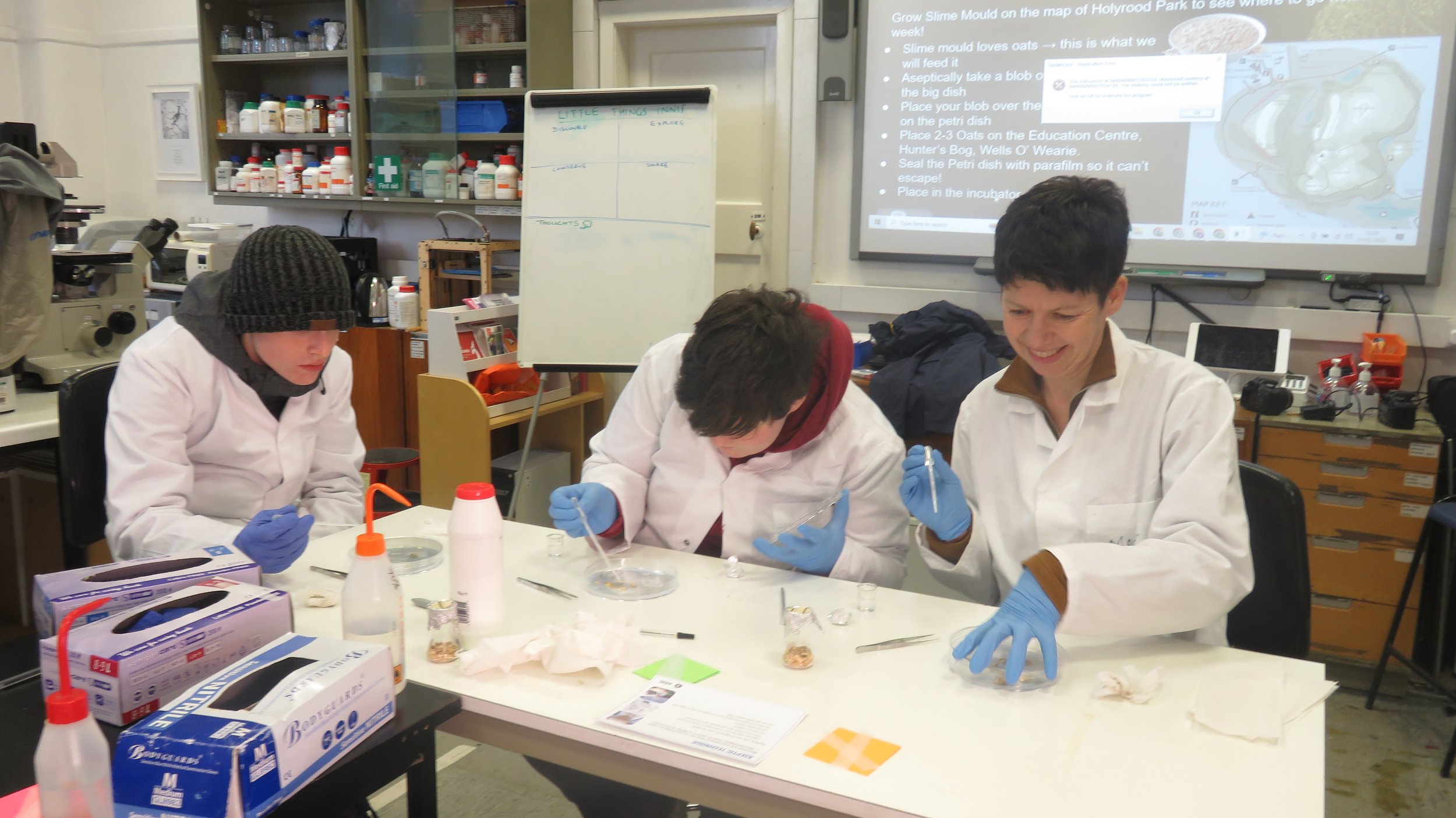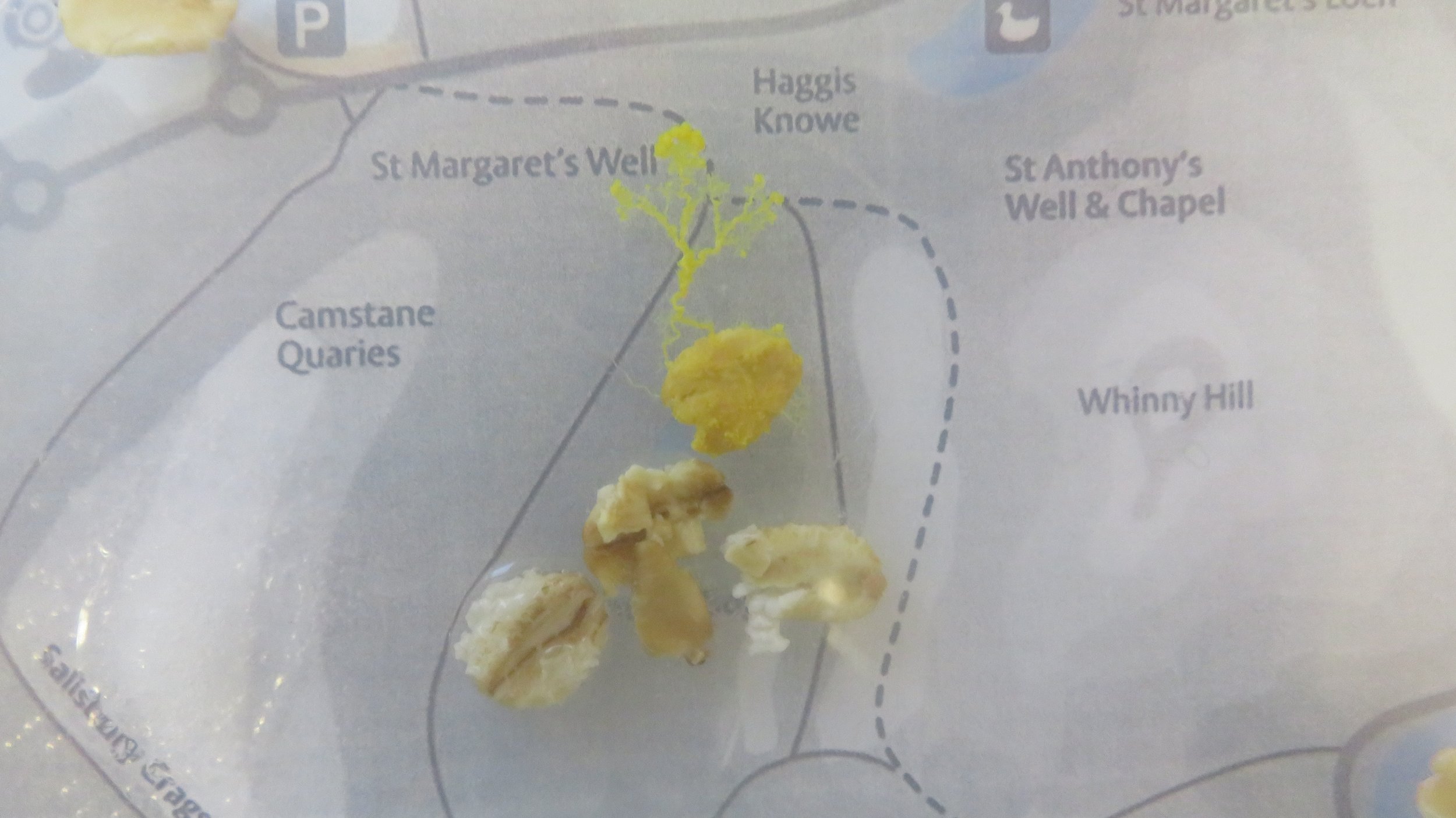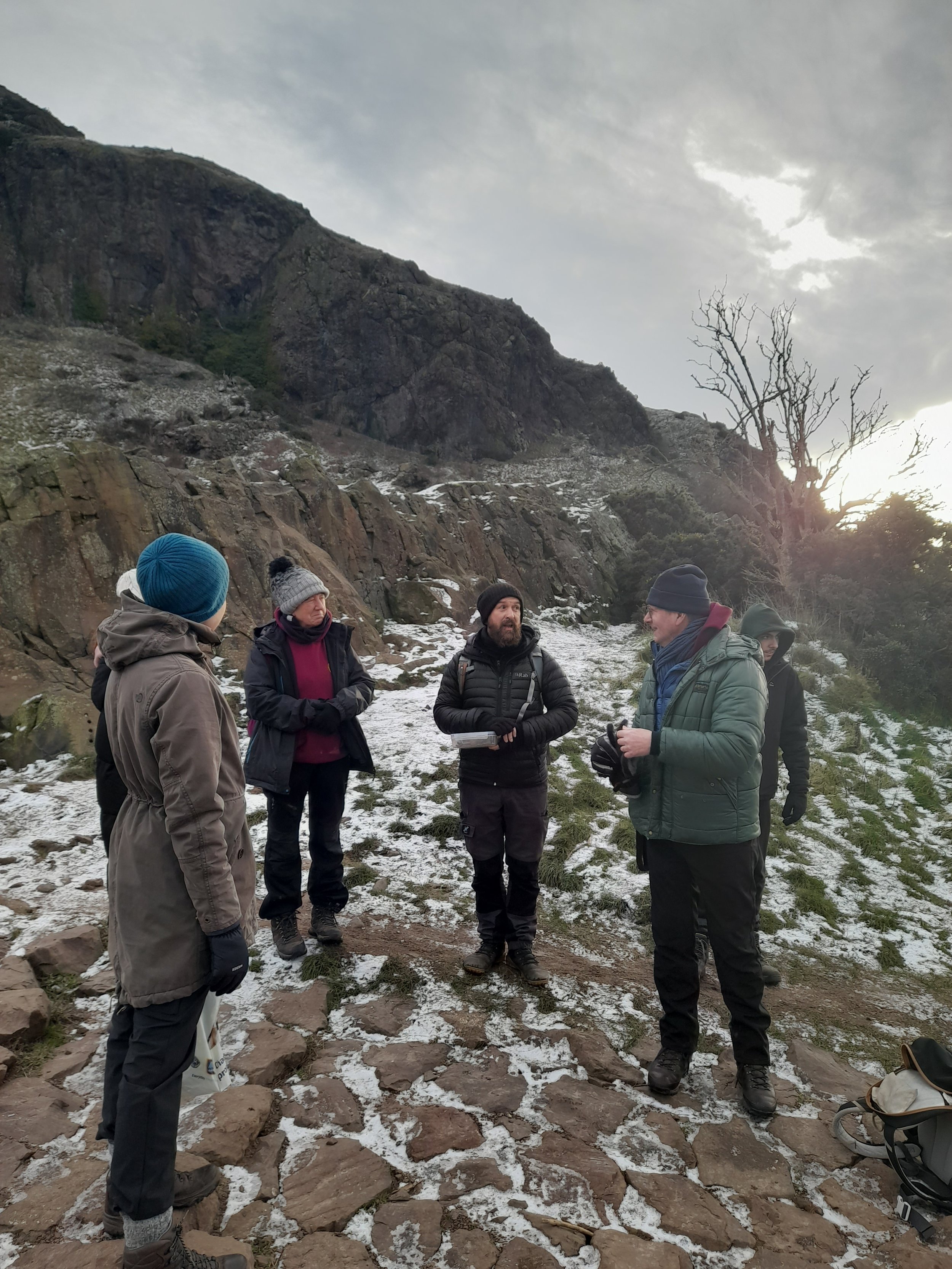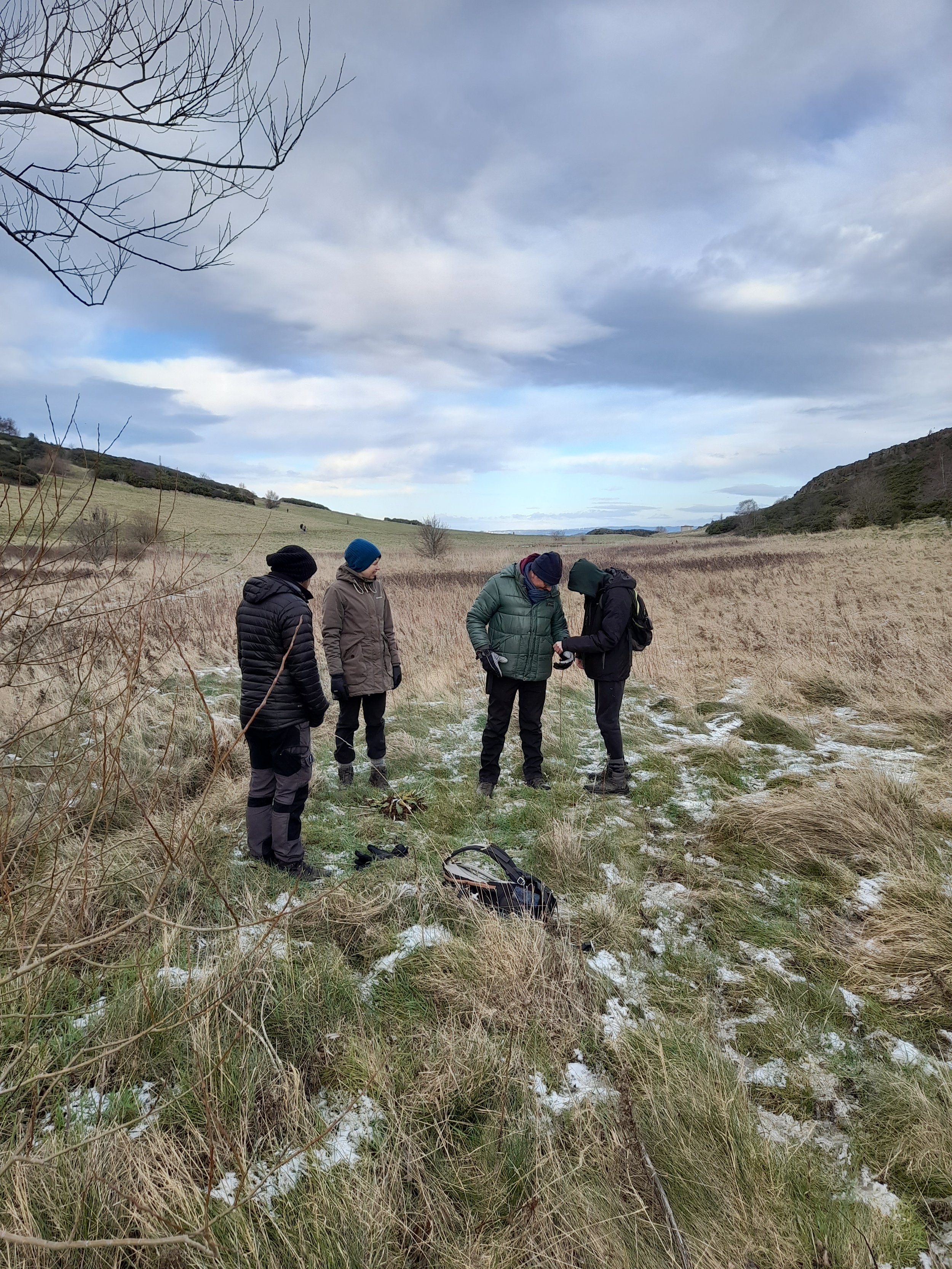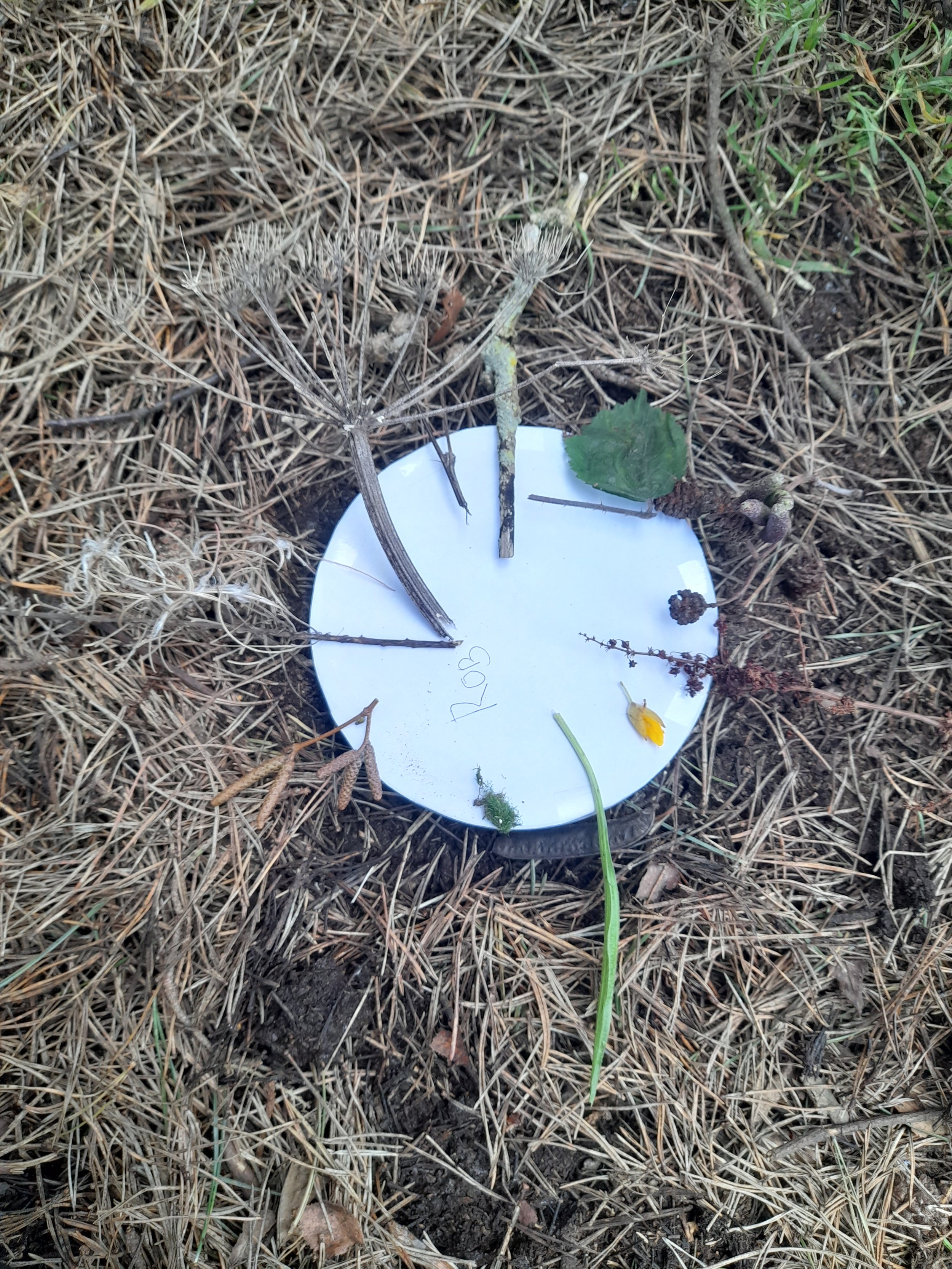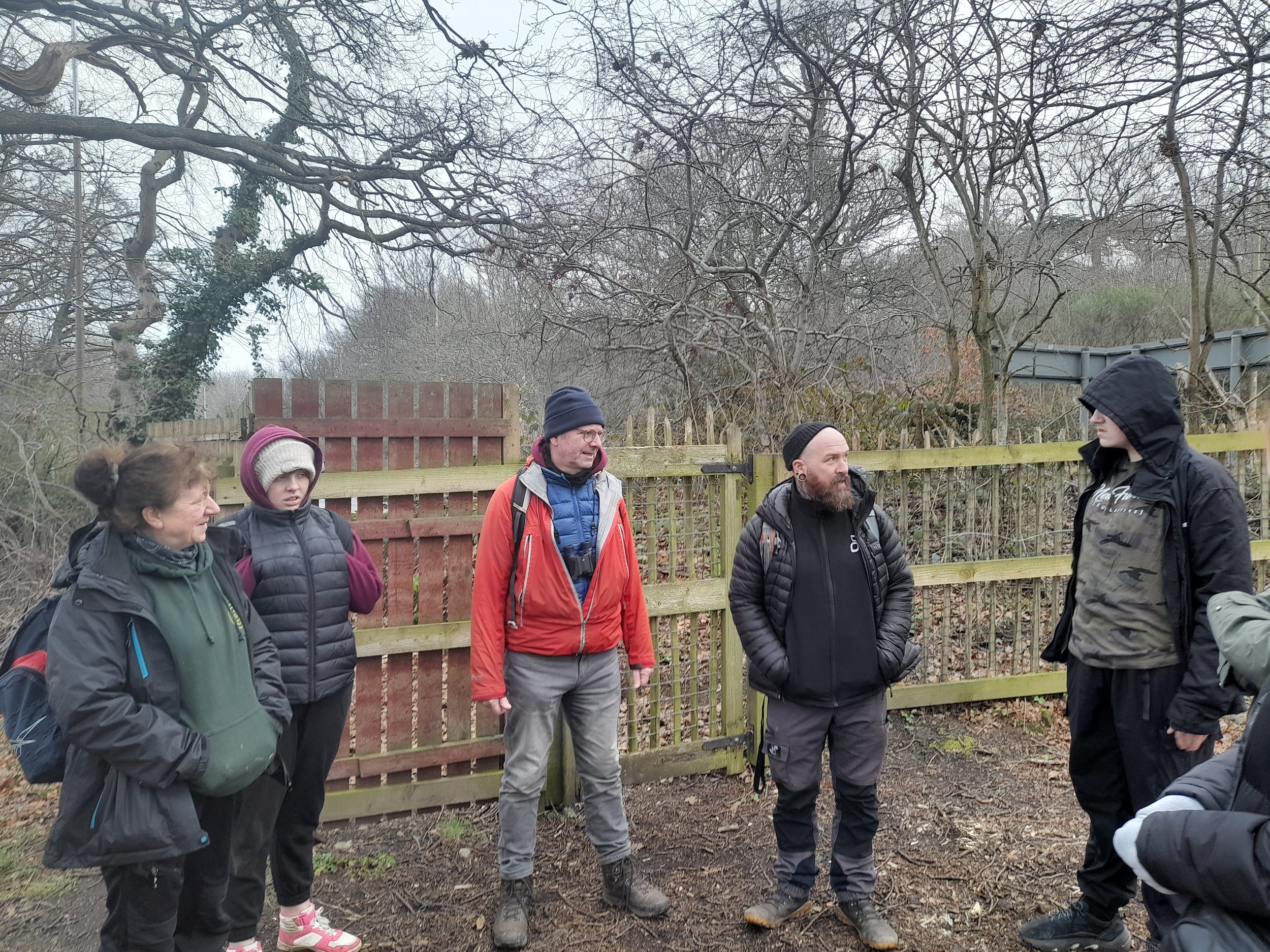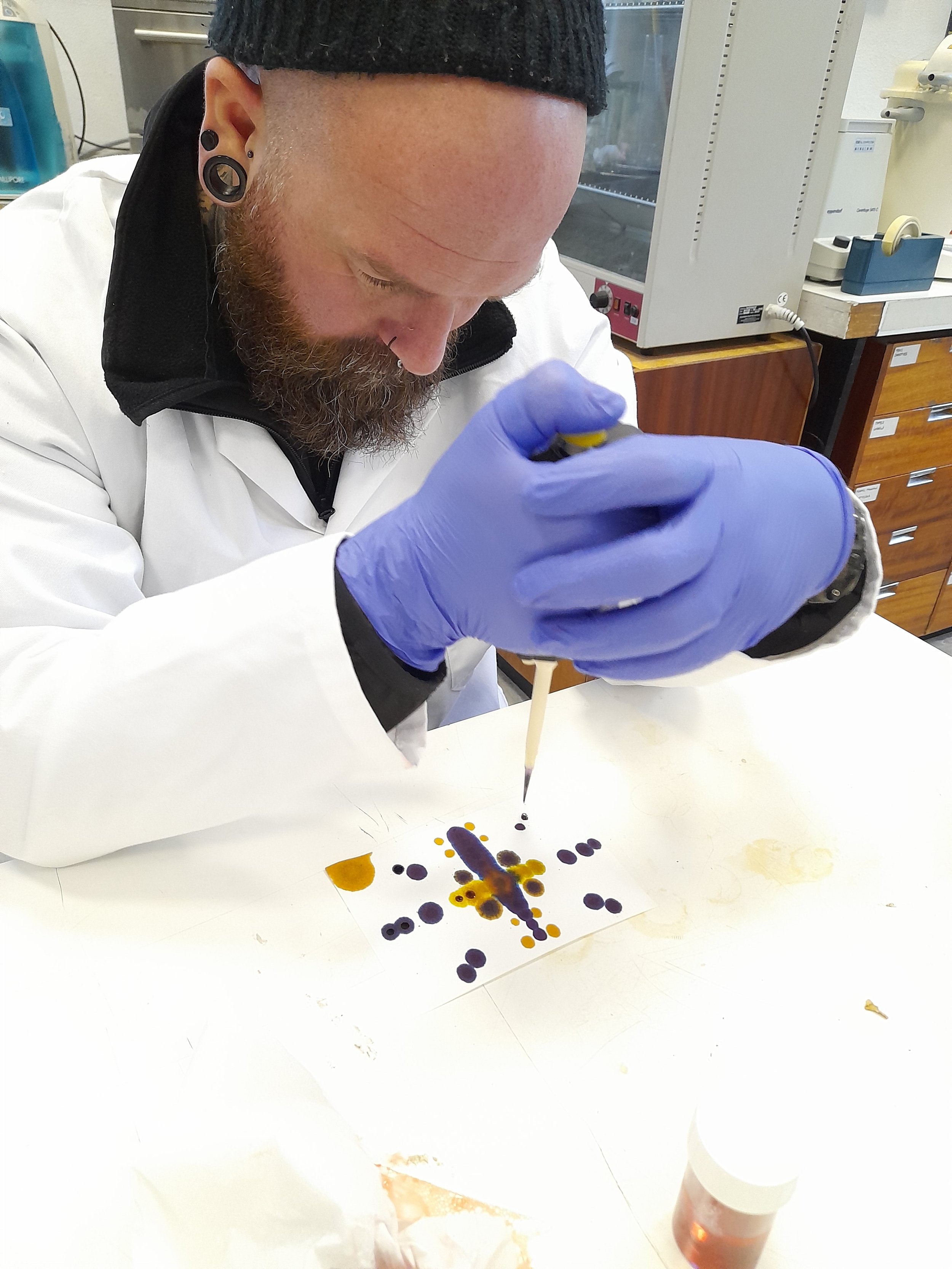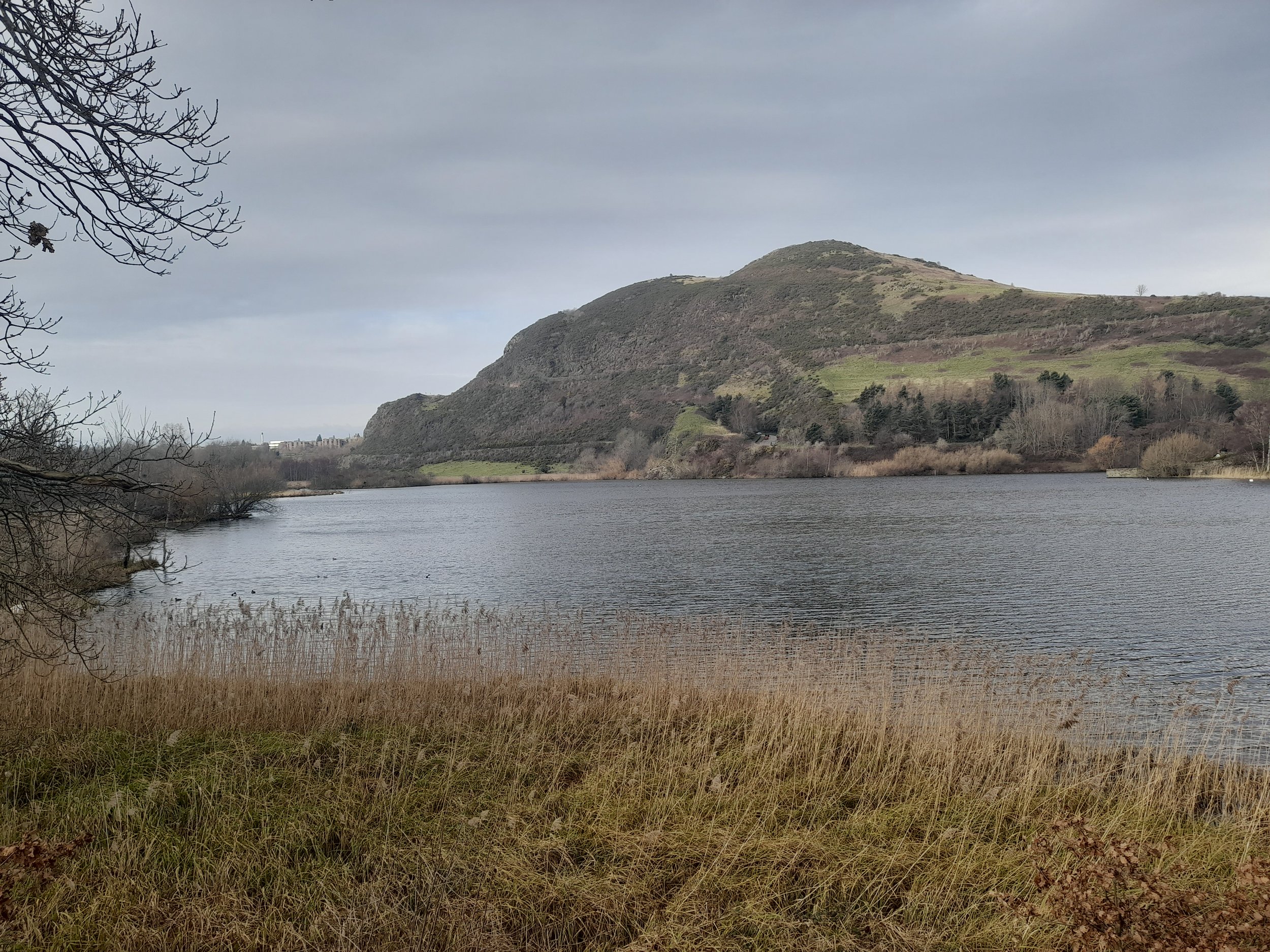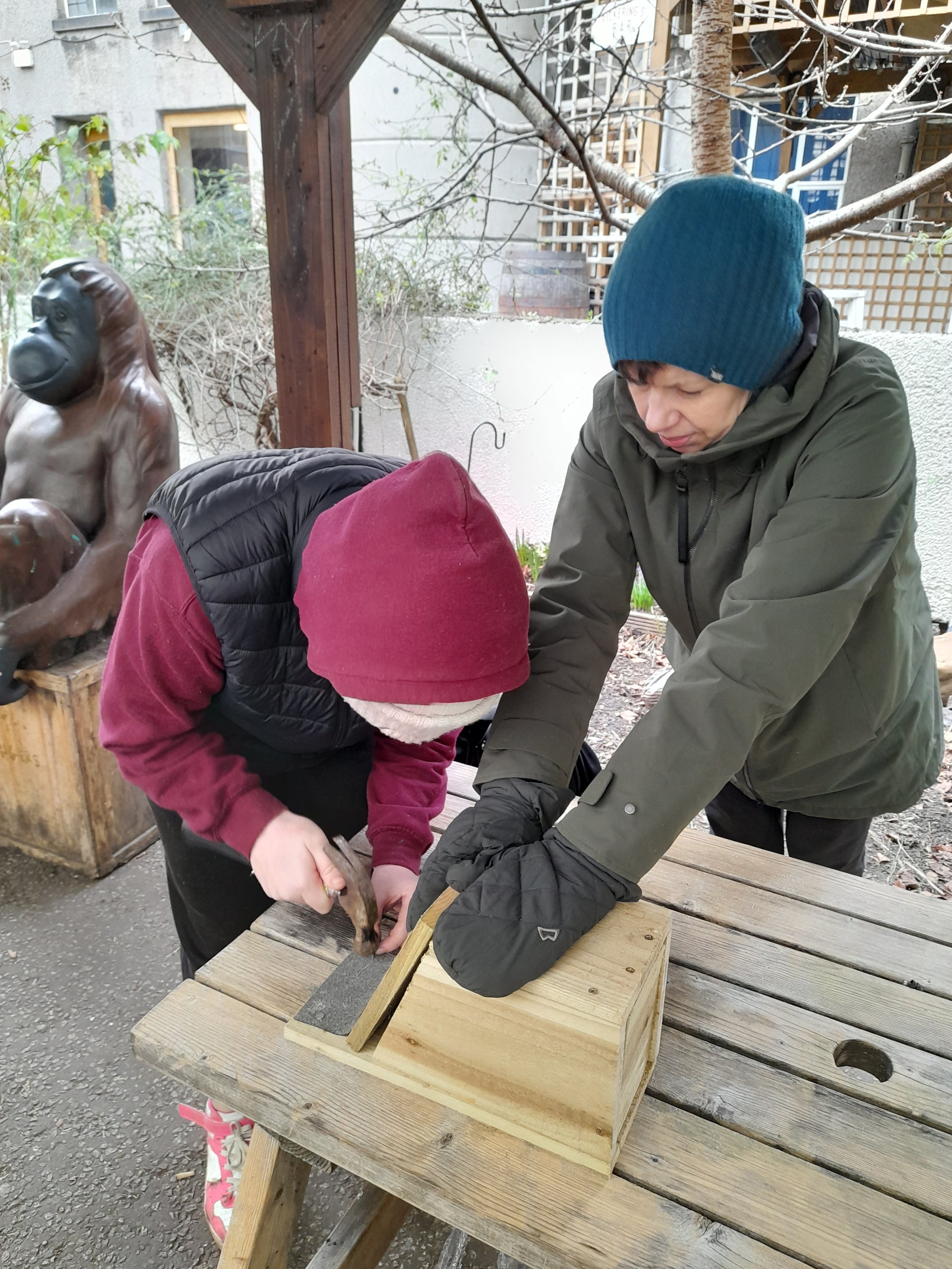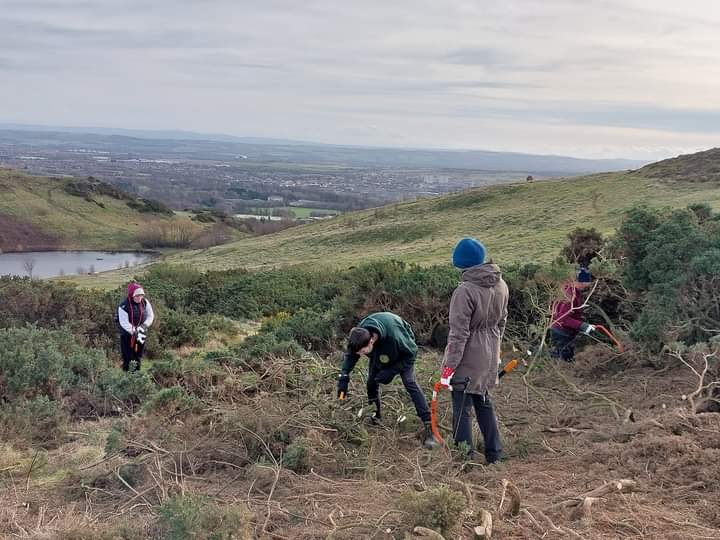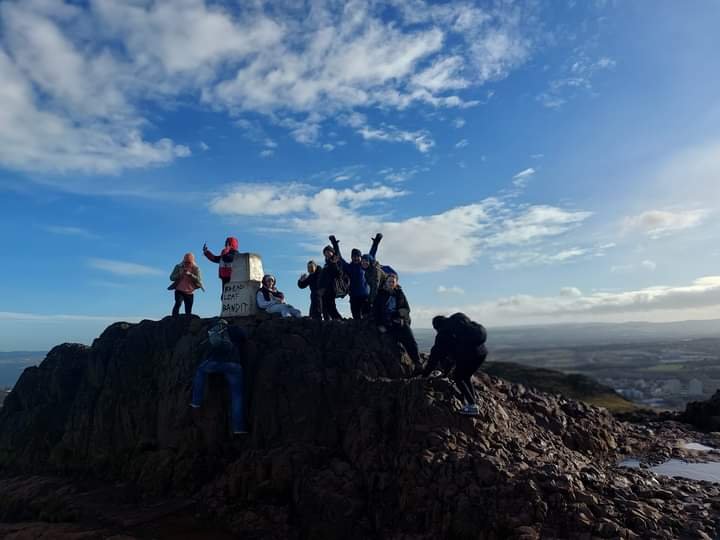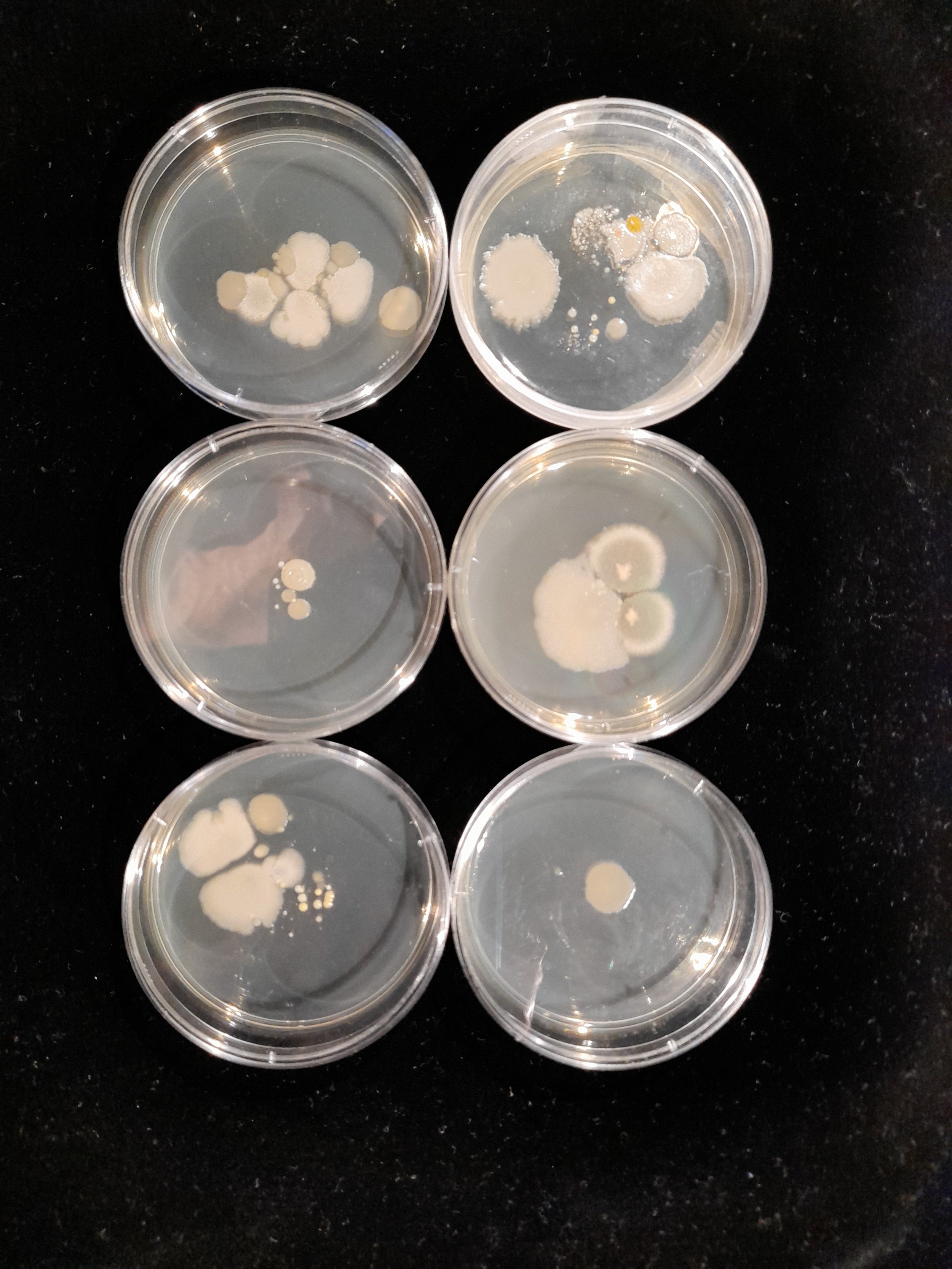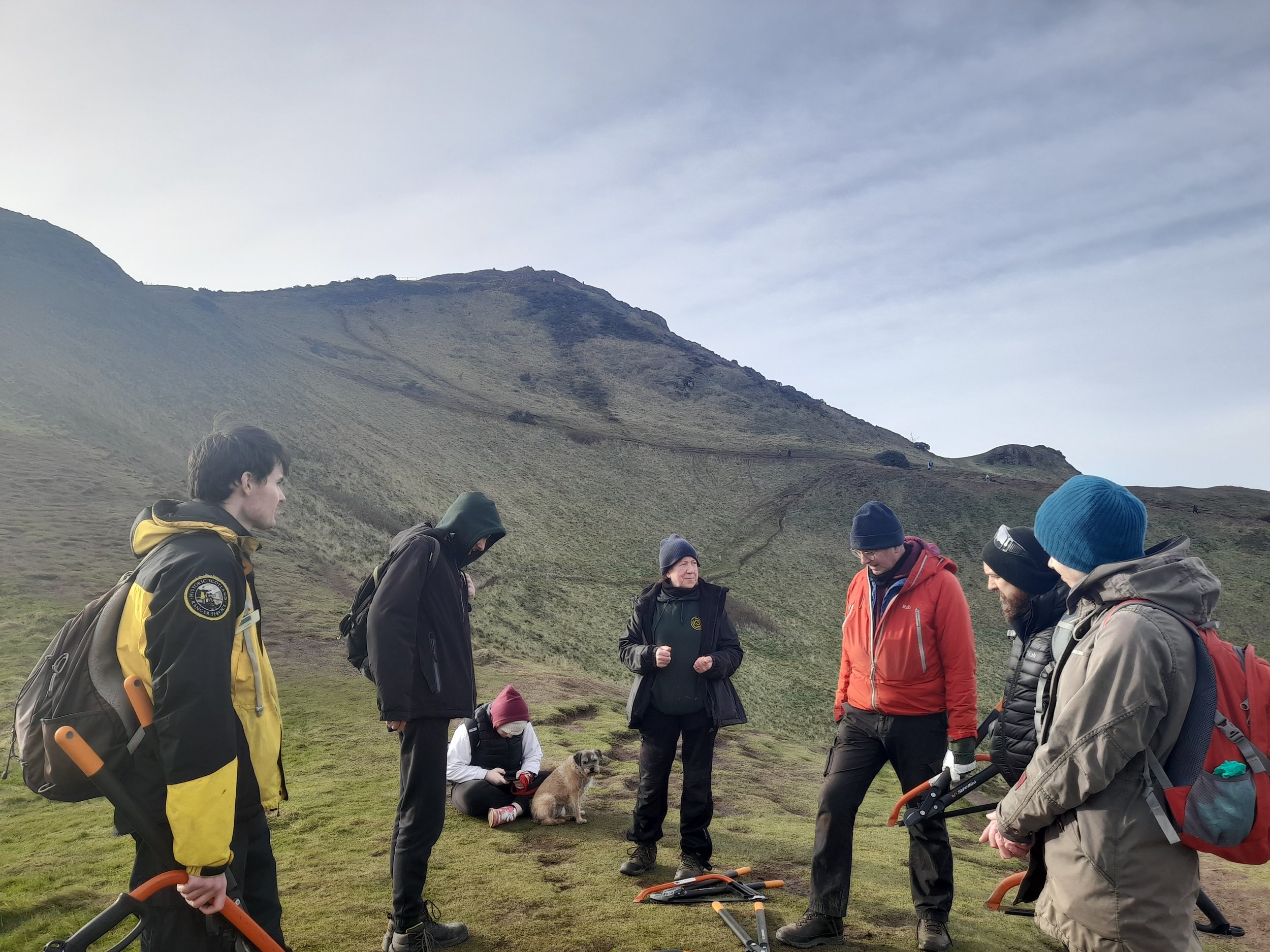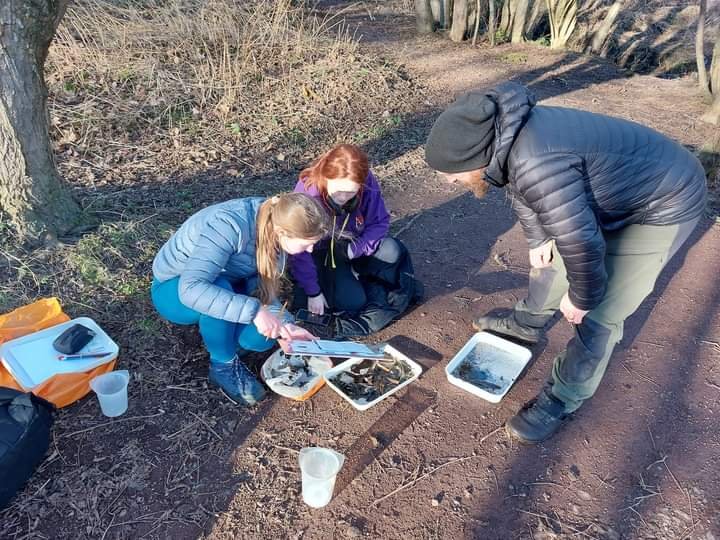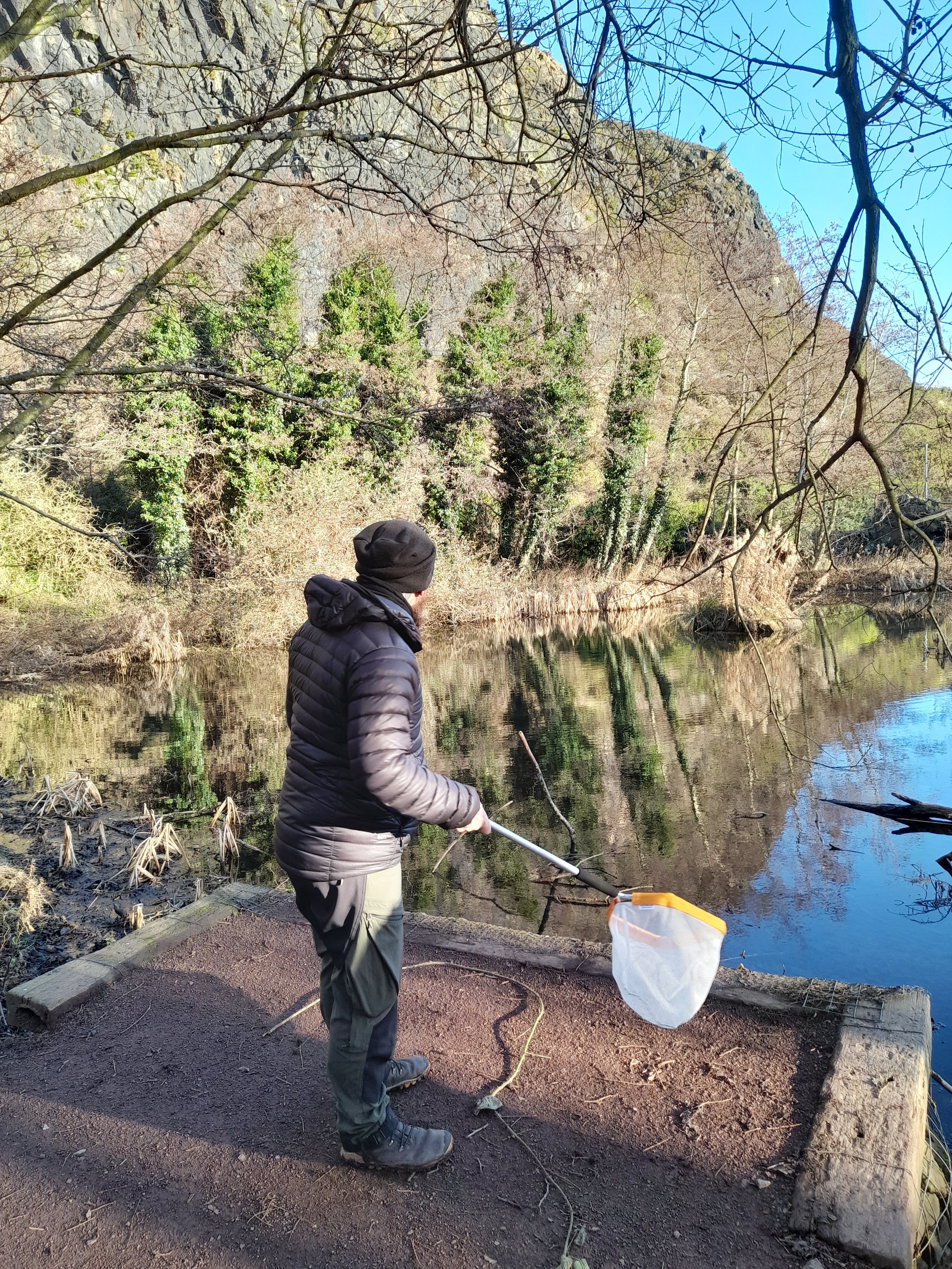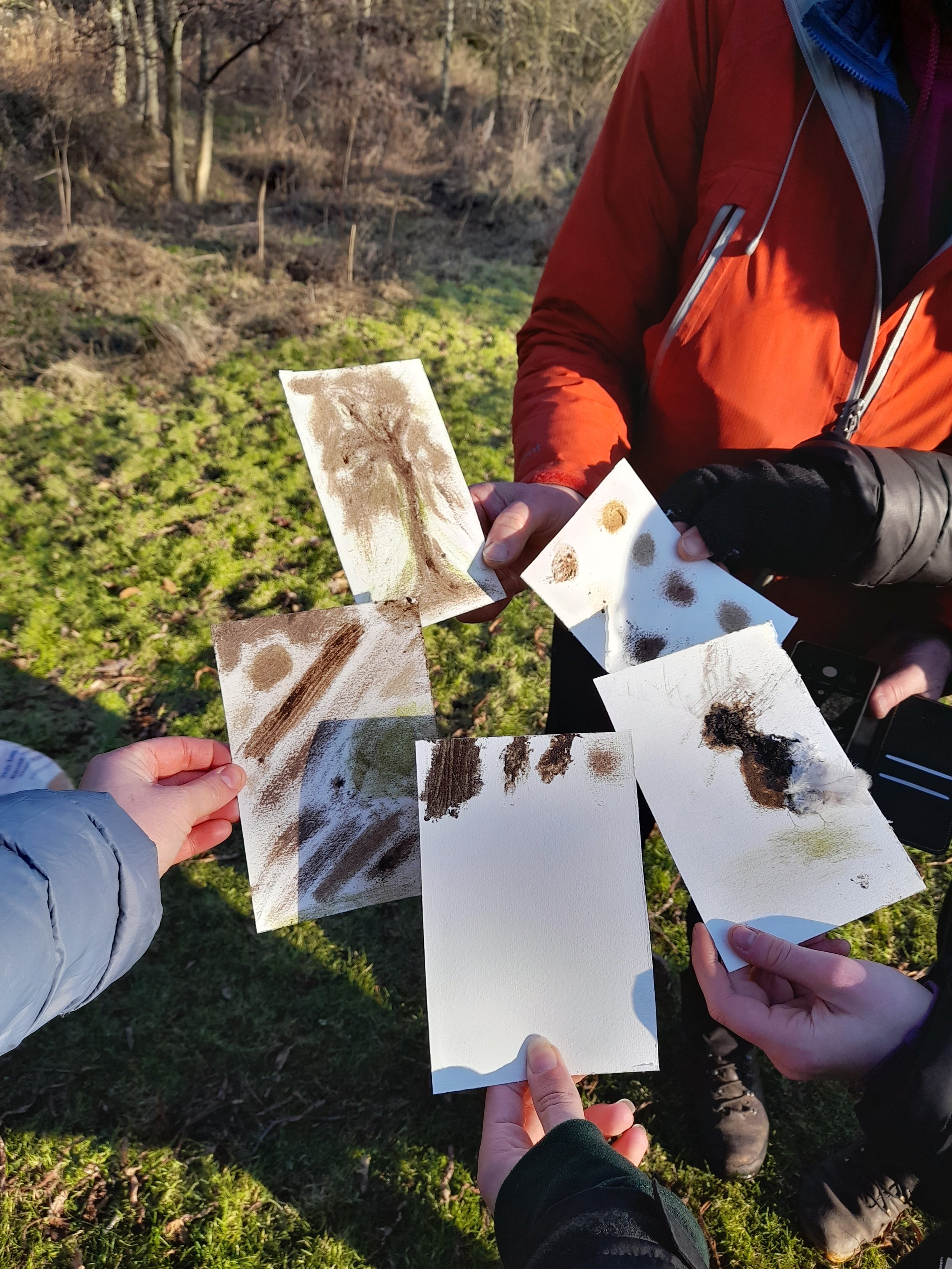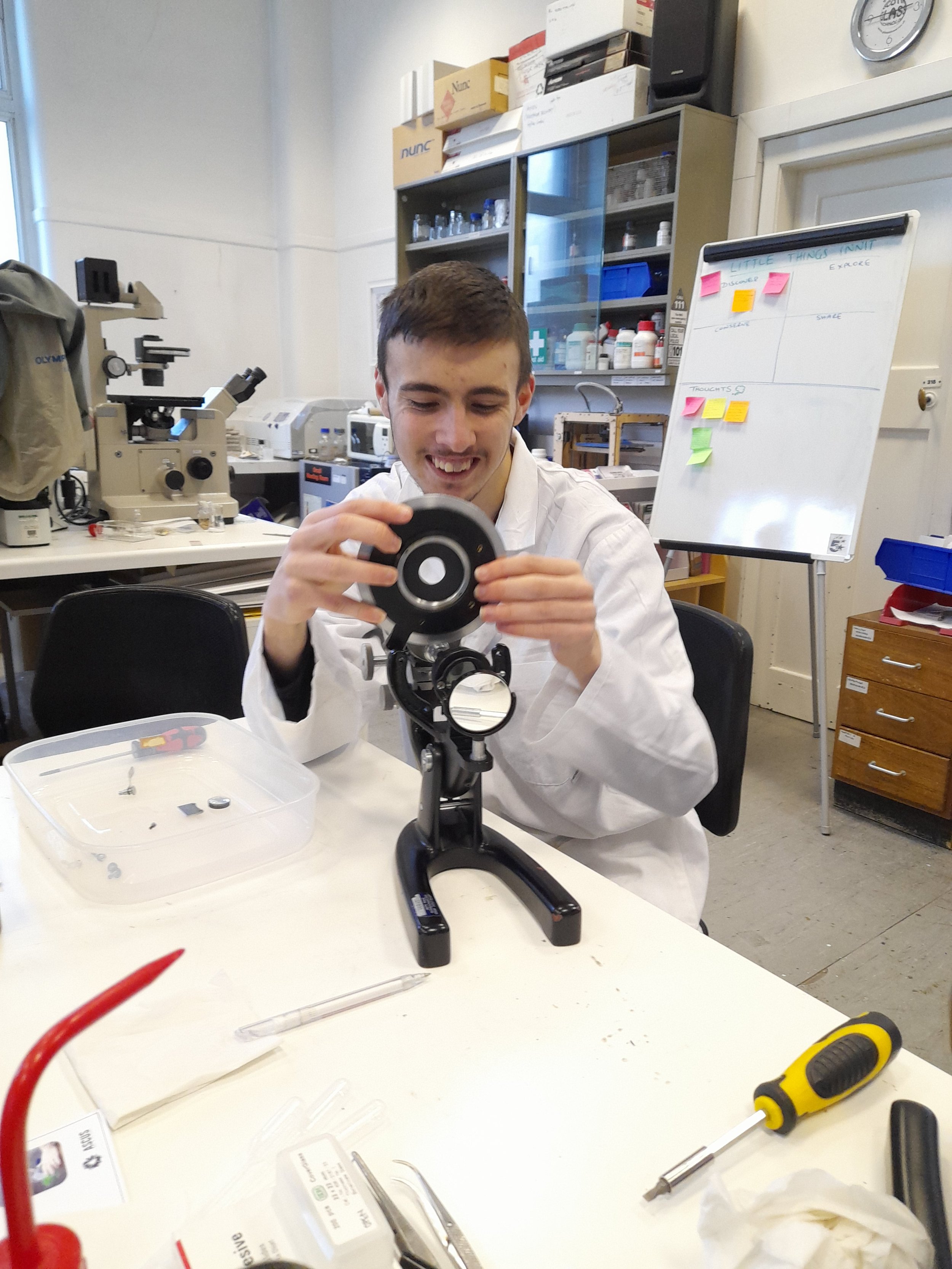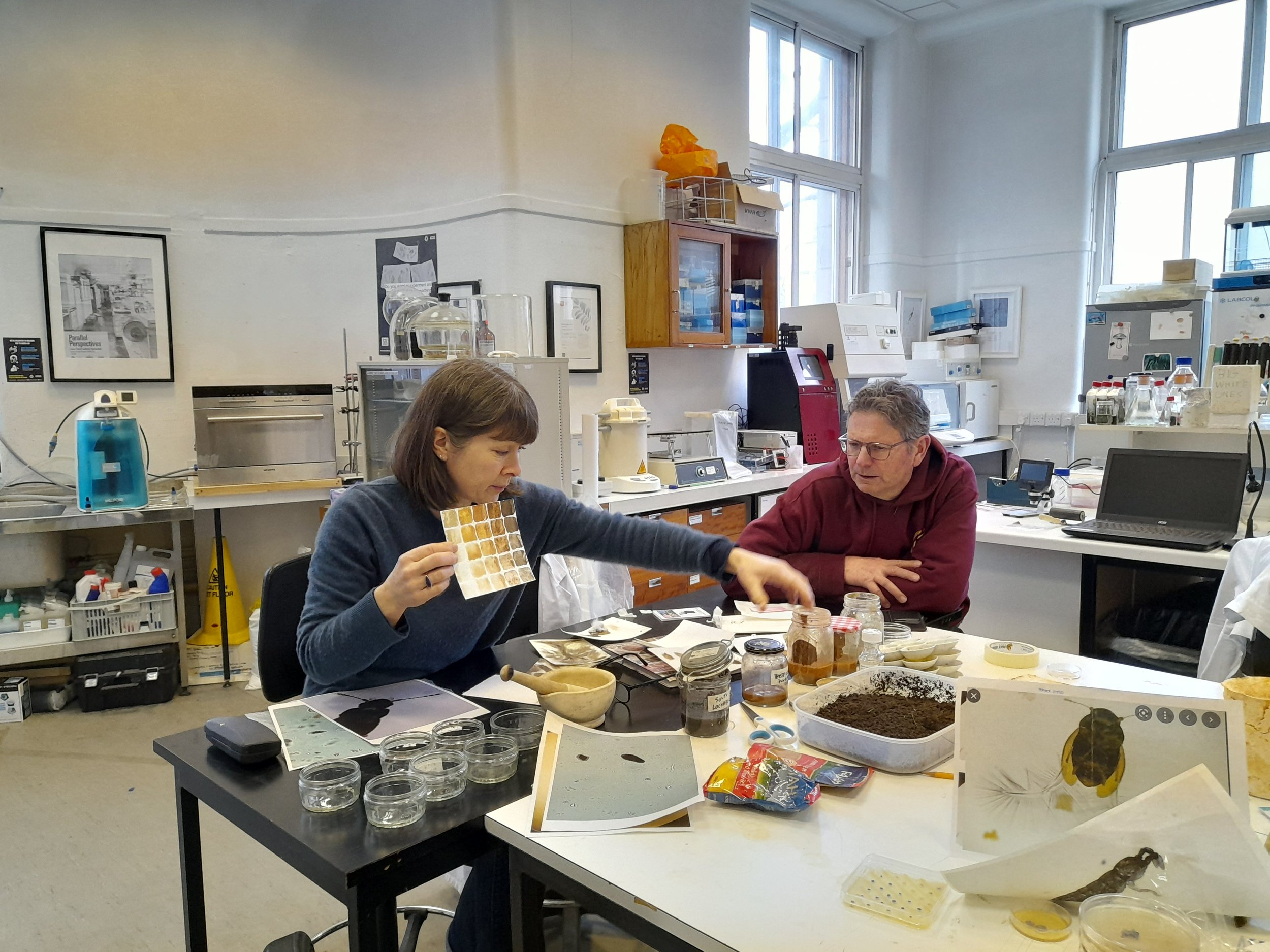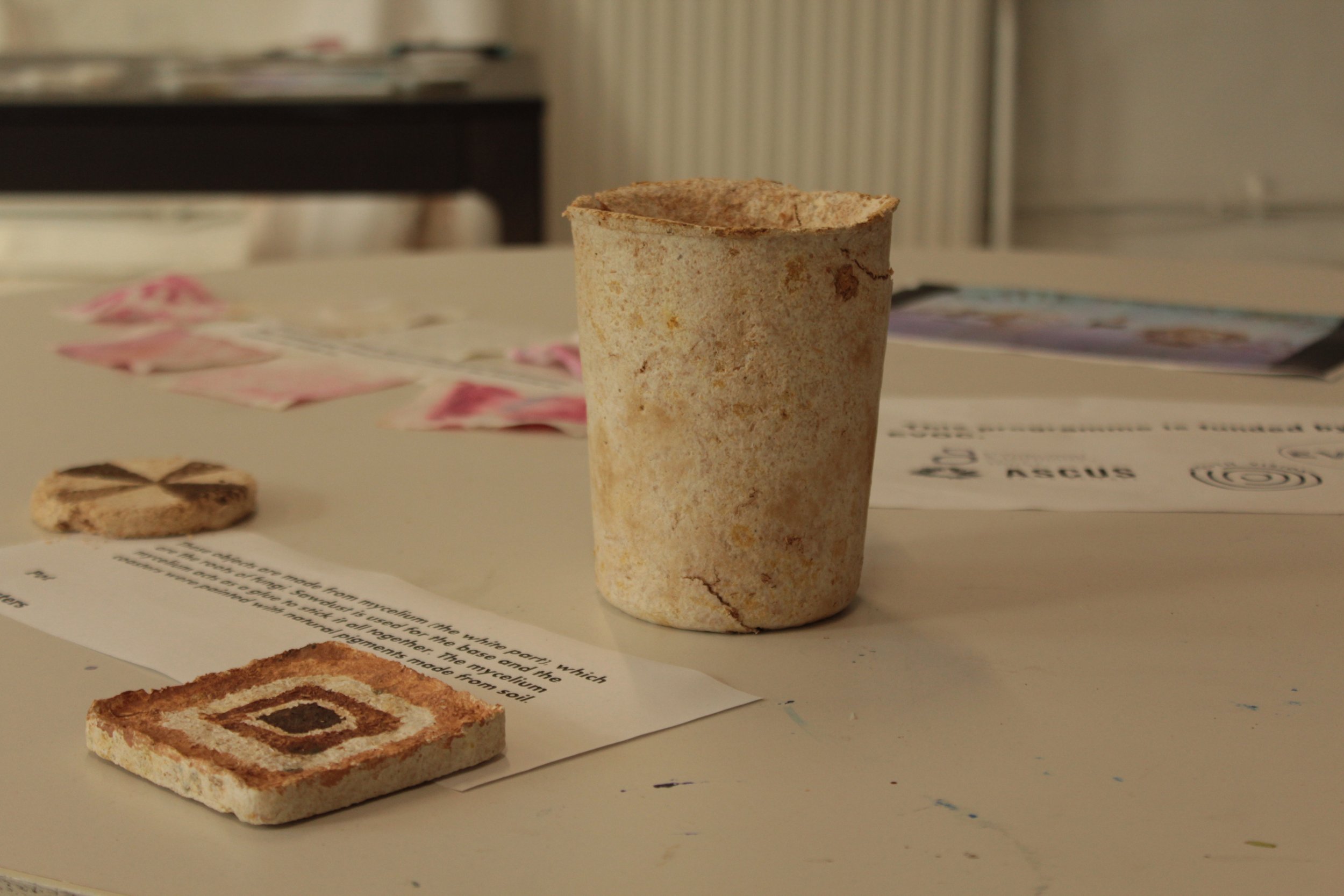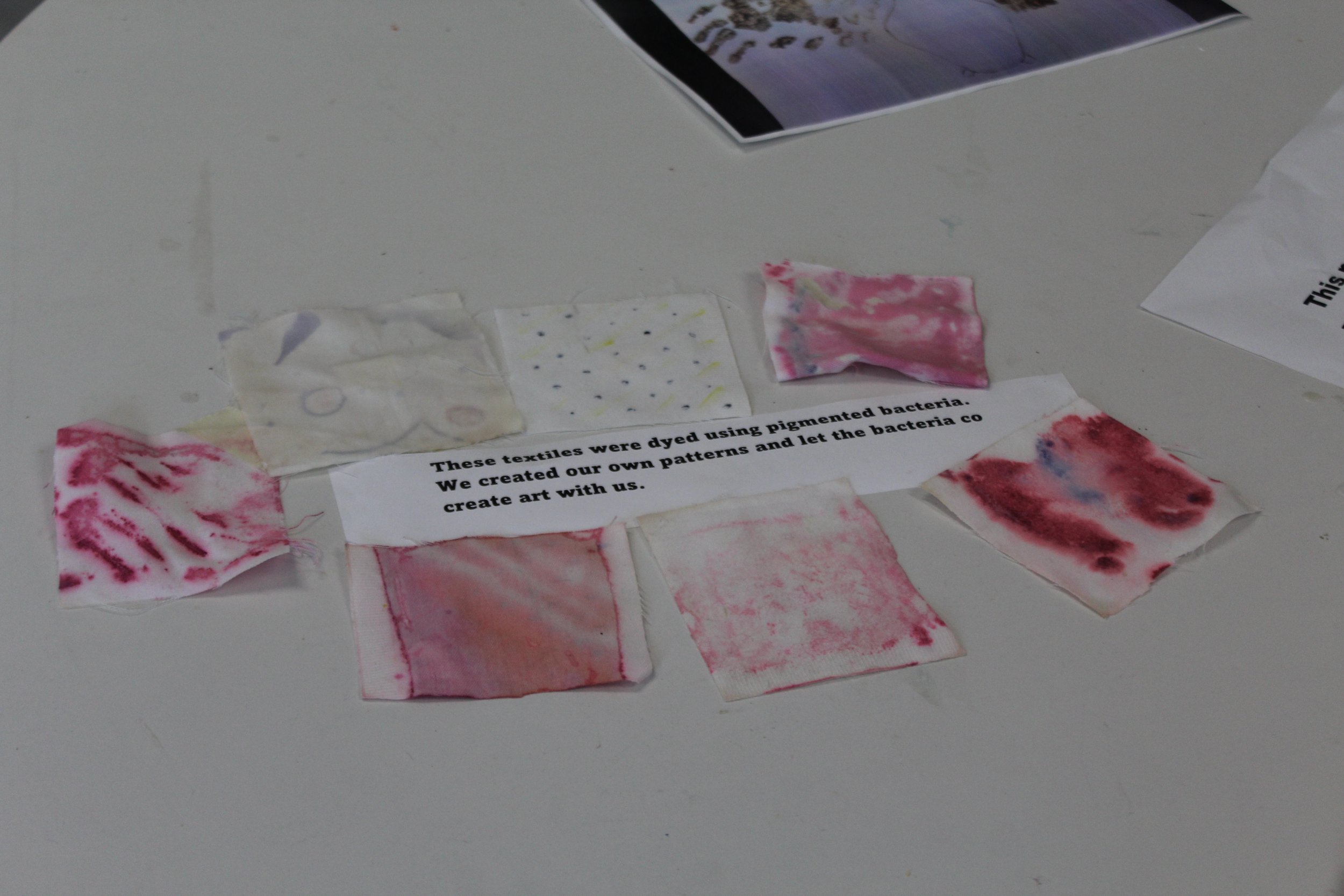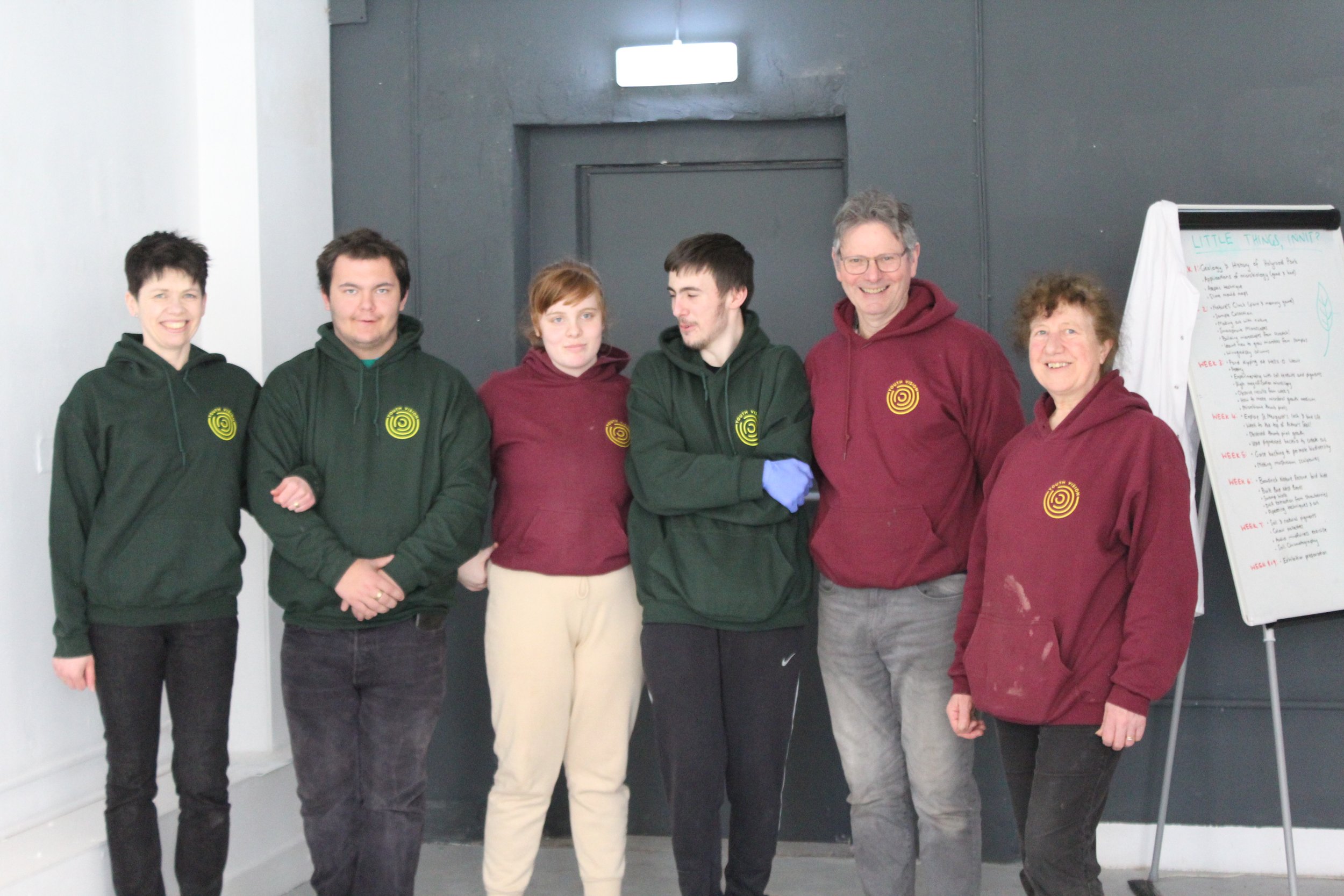It’s the little things, innit?
We were so pleased to be able to run our hybrid outdoor-indoor youth learning programme, Unearthing Microlife for the second time this time over winter 2023 and in partnership with the Edinburgh and Lothians Greenspace Trust (ELGT), Youth Vision, and artist, Natalie Taylor.
After a lot of behind the scenes work, we kicked off the programme on a bone-chilling, windy winter's day. We were met with some groans about being cold and tired from the Staying on Track group from Youth Vision at Holyrood Park which were quelled with hot drinks and biscuits before getting started for the day. Rob May from ELGT led the group through Holyrood Park and with his knack for story-telling, informed us of some of the history and geology of the park. We learnt that Edinburgh used to have a Mediterranean climate, and that Arthur’s seat is an extinct volcano. We also found evidence of the park being underwater at some stage in history!
Back in the ASCUS Lab, our lab manager Keira asked what the group thought microbiology was before diving into the nitty gritty of the subject. One of the participants responded with “it's the little things, innit?” and we couldn’t have received a better response that encapsulates a rather complex subject so simply. The group was introduced to the basic concepts and practical techniques of microbiology, learnt about the bad and the good microbes, and we made acquaintances with Physarum polycephalum, more commonly known as slime mould. This remarkably clever organism helped everyone plot out the most efficient path through the park for the following week.
The group left tired, but inspired and excited to learn more.
“I thought that was a brilliant day. Keira and Rob had planned it so well between them and they are both so skilled at engaging young people (and adults) in their subject. As a teacher, I know how hard that can be! The maps of Holyrood Park on the bottom of the petri dishes was a stroke of genius! Can’t wait for next week!” - Youth Vision facilitator on week 1.
Images: Left - Learning the skills of a microbiologist and slime mould, Right - Slime mould starting to find the most efficient way through the park.
The next 8 weeks were full of exploration, learning, self discovery, curiosity, achievements and changed perspectives about science and being outdoors.
Each Wednesday we met at Holyrood Park and over the course of the programme explored places which some of us had never been before, like St Anthony’s chapel, the Wells O’ Wearie, Hunter’s Bog, Bawsinch Bird Hide and the top of Arthur’s Seat! Rob led us through some of the plant diversity in the park. Even in winter, we were astonished by how many species were there that we so often overlook. Inspired by Andrew Goldsworthy, we made mandalas from things we found in the park and created some incredible works of art.
The weeks were jam-packed, with collecting samples to examine under high magnification microscopes and learn more about the microscopic life that plays a vital role in our environment and lives, pond dipping to assess water quality, bird watching, nestbox building, gorse bashing, creating mycelium objects, strawberry DNA extraction, comparing our microbiological thumb prints to one another, building microscopes, using pigmented bacteria to create artworks and so much more.
In the final two weeks of the programme, we were joined by artist Natalie Taylor who led the group in making pigments from soil, moss and the crocuses that had just started popping up as spring was upon us. She guided the group into using these pigments to create a poster that summed up the programme and helped us curate an exhibition where the group showcased the items created during the programme at Summerhall for 2 weeks.
When normally confined to the indoors over winter, the grey skies and cold reflects the state our mental health tends to veer towards over this time. This programme enabled us to break that mentality, get outdoors despite the weather and as a result, learn new things, appreciate our green spaces and understand the importance of conserving them. By giving the group some ownership of the activities we covered, we have watched the young people find their voice and build confidence within themselves and go from saying things like “I don’t know anything” to “I’m so smart” and “science is fun” and take the skills they have developed over the course of the programme and apply them to real-life situations, look at the world a little differently than before and realise they hold a valuable place in society.
If you have a school, youth or other support group that you feel would be interested in participating in future iterations of this programme, please do get in touch with us!
This year's programme was funded by the Mental Health and Wellbeing Fund provided by EVOC.

